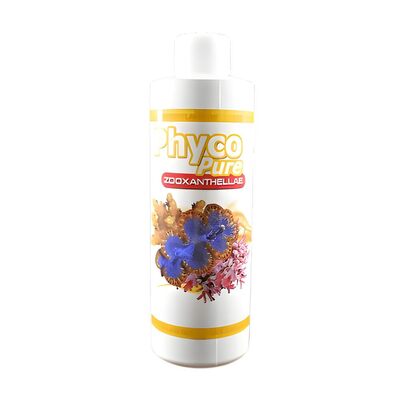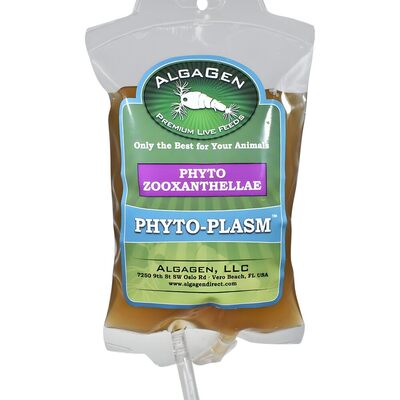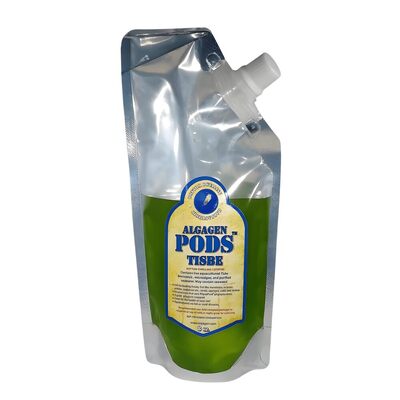Zooxanthellae are tiny, photosynthetic algae living in symbiosis with various marine organisms, especially corals. These algae are crucial for the health and sustainability of coral reefs, providing essential nutrients through photosynthesis. While the symbiotic relationship between zooxanthellae and corals is well-known, the question of what eats zooxanthellae is less commonly addressed. Understanding the natural predators and consumers of zooxanthellae helps paint a comprehensive picture of the marine ecosystem and its intricate food webs. This article explores the various organisms that feed on zooxanthellae, their roles in the ecosystem, and the implications for coral reef health.
The Role of Zooxanthellae in Marine Ecosystems
Zooxanthellae, primarily from the genus Symbiodinium, reside within the tissues of corals and other marine invertebrates. These microscopic algae perform photosynthesis, converting sunlight into energy they share with their hosts. In return, they receive protection and access to nutrients from the coral. This symbiosis is critical for the survival and growth of coral reefs, as zooxanthellae supply up to 90% of the energy corals need.
What Eats Zooxanthellae?
While zooxanthellae primarily exist within coral tissues, they are not immune to predation. Several marine organisms feed on zooxanthellae either directly or indirectly. Here are some of the critical consumers:
Coral Predators
Certain marine species consume corals directly, and in the process, they ingest zooxanthellae. These predators include:
Crown-of-Thorns Starfish (Acanthaster planci)
The crown-of-thorns starfish is one of the most well-known predators of corals. This large, spiny starfish preys on coral polyps, consuming both the coral tissue and the zooxanthellae. Outbreaks of crown-of-thorns starfish can devastate coral reefs, leading to significant losses of both corals and their symbiotic zooxanthellae.
Parrotfish (Scaridae family)
Parrotfish are herbivorous fish graze on coral surfaces, scraping off the coral tissue to feed on the algae and other organisms living on the reef. While primarily consuming the coral's outer layer, they also ingest zooxanthellae. Parrotfish play a dual role, contributing to coral reef erosion and helping to control algae growth and facilitate coral recruitment.
Butterflyfish (Chaetodontidae family)
Butterflyfish are known for their vibrant colors and patterns. Many species of butterflyfish feed on coral polyps, thus ingesting zooxanthellae along with the coral tissue. Their selective feeding can impact coral health and the density of zooxanthellae populations within the reef.
Microbial Grazers
In addition to larger predators, microscopic organisms and small grazers can also consume zooxanthellae:
Protozoans
Protozoans are single-celled organisms that can feed on zooxanthellae. These tiny grazers can ingest free-living zooxanthellae or those released into the water column when damaged or stressed coral tissues. By consuming zooxanthellae, protozoans contribute to the cycling of nutrients within the reef ecosystem.
Filter Feeders
Some filter-feeding organisms, such as certain species of sponges and bivalves, can consume zooxanthellae suspended in the water column. These filter feeders are crucial in maintaining water quality and recycling nutrients within coral reef ecosystems.
Coral Diseases and Bleaching
While not direct predators, coral diseases and bleaching events can lead to the loss of zooxanthellae from coral tissues. During bleaching, corals expel their zooxanthellae in response to elevated temperatures, losing color and vital energy sources. Opportunistic microbes and algae can then consume the expelled zooxanthellae, further altering the nutrient dynamics of the reef.
Ecological Implications of Zooxanthellae Consumption
Impact on Coral Health
The consumption of zooxanthellae by various predators can have significant implications for coral health. Loss of zooxanthellae reduces the coral's energy supply, impairing its ability to grow, reproduce, and recover from stress. Predation by organisms like the crown-of-thorns starfish can lead to large-scale coral mortality, disrupting the delicate balance of the reef ecosystem.
Nutrient Cycling
Zooxanthellae play a crucial role in nutrient cycling within coral reefs. Converting sunlight into energy and utilizing waste products from corals helps maintain a balanced ecosystem. Predators that consume zooxanthellae contribute to this nutrient cycling by releasing nutrients back into the environment through their waste, which other organisms can utilize.
Biodiversity and Ecosystem Resilience
Predation of zooxanthellae and their host corals can influence the biodiversity and resilience of coral reef ecosystems. While some predation is natural and helps maintain ecological balance, excessive predation or environmental stressors that lead to widespread loss of zooxanthellae can weaken reef resilience. Healthy, diverse reefs are better equipped to withstand and recover from disturbances, ensuring the continued survival of a wide range of marine species.
Conservation and Management Strategies
Protecting Coral Reefs
Effective conservation and management strategies are essential for protecting coral reefs and their symbiotic zooxanthellae. Establishing marine protected areas (MPAs) can help safeguard critical habitats from overfishing, pollution, and other human impacts. MPAs provide refuges where corals and their zooxanthellae can thrive, free from excessive predation and environmental stress.
Controlling Crown-of-Thorns Starfish
Managing populations of crown-of-thorns starfish is crucial for preventing large-scale coral destruction. Targeted removal programs, where divers manually remove starfish from reefs, can help control outbreaks and reduce their impact on coral and zooxanthellae populations.
Promoting Sustainable Fishing Practices
Sustainable fishing practices can help maintain the ecological balance of coral reefs. By regulating fishing activities and implementing measures to prevent overfishing, we can reduce the pressure on coral and zooxanthellae populations. Sustainable practices also help preserve the biodiversity and resilience of reef ecosystems.
Community Engagement and Education
Community involvement is crucial for conserving coral reefs and their symbiotic zooxanthellae. Engaging local communities, raising awareness, and educating on sustainable practices can significantly improve reef protection.
Local Involvement
Empowering local communities that rely on coral reefs for their livelihoods is essential. Educational programs focusing on the importance of coral reefs and the role of zooxanthellae can foster stewardship and encourage sustainable fishing and tourism practices. Community-led conservation initiatives can be highly effective in protecting and restoring reef ecosystems.
Educational Programs
Implementing educational programs in schools and communities can raise awareness about coral reef conservation. These programs can include workshops, seminars, and field trips to reefs, providing firsthand experience and understanding of reef ecosystems. Public awareness campaigns through media, social platforms, and community events can also spread knowledge about the importance of coral reefs and the threats they face.
Citizen Science
Citizen science projects offer opportunities for individuals to contribute to reef conservation efforts. These projects often involve volunteers in reef monitoring, data collection, and coral restoration. Citizen scientists can provide valuable data on reef health, bleaching events, and predator populations, helping researchers and conservationists develop effective strategies.
Examples of Citizen Science Projects
Reef Check: An international program that trains volunteers to monitor the health of coral reefs. Reef Check volunteers collect data to track reef conditions and advocate for reef protection.
CoralWatch: A global citizen science project based at the University of Queensland that involves volunteers monitoring coral bleaching using a simple color chart to assess coral health.
Technological Innovations
Advancements in technology are enhancing our ability to study and protect coral reefs and their zooxanthellae. Tools such as remote sensing, underwater drones, and artificial intelligence are being used to monitor reef health, track environmental changes, and identify areas needing protection or restoration.
Remote Sensing
Satellite imagery and remote sensing technology allow scientists to monitor large-scale changes in coral reefs over time. These tools can detect coral bleaching events, changes in water quality, and other stressors impacting reef health. Remote sensing provides critical data for managing and protecting coral ecosystems.
Underwater Drones
Underwater drones, or remotely operated vehicles (ROVs), explore and monitor coral reefs. Equipped with cameras and sensors, these drones can capture high-resolution images and collect data on reef health, biodiversity, and environmental conditions. They enable researchers to access and study remote or deep reef areas that are difficult to reach by traditional diving methods.
Artificial Intelligence
Artificial intelligence (AI) and machine learning algorithms are being applied to analyze large datasets from reef monitoring efforts. AI can help identify patterns, predict bleaching events, and assess the effectiveness of conservation strategies. By processing vast data, AI provides insights to inform reef management and protection efforts.
Research and Restoration
Ongoing research into the biology and ecology of zooxanthellae and their symbiotic relationships with corals is vital for developing effective conservation strategies. Restoration projects aim to rehabilitate damaged reefs and promote the reestablishment of healthy coral-zooxanthellae partnerships.
Genetic Research and Selective Breeding
Scientists are exploring the genetic diversity of zooxanthellae to identify strains more resilient to environmental stressors such as heat and acidification. Selective breeding programs aim to pair corals with these resilient strains to create "super corals" better equipped to withstand changing ocean conditions. These efforts can enhance the resilience of coral reefs to various threats.
Coral Gardening and Microfragmentation
Coral gardening involves growing coral fragments in nurseries and transplanting them onto degraded reefs to restore coral populations. Microfragmentation is a technique where corals are broken into small pieces to encourage rapid growth and spreading. These restoration methods can accelerate reef recovery and improve the health of coral-zooxanthellae partnerships.
Conclusion
Understanding what eats zooxanthellae provides valuable insights into coral reef ecosystems' complex food webs and ecological dynamics. Various marine organisms, from large predators like the crown-of-thorns starfish and parrotfish to microscopic grazers like protozoans, consume zooxanthellae, influencing the health and balance of reef ecosystems. Effective conservation and management strategies are essential for protecting coral reefs and their symbiotic zooxanthellae from excessive predation and environmental stressors. By promoting sustainable practices and engaging local communities in conservation efforts, we can help ensure these crucial marine ecosystems' continued vitality and resilience. Through concerted efforts and innovative solutions, we can protect the delicate balance of coral reefs and ensure their survival for generations.





Recent post